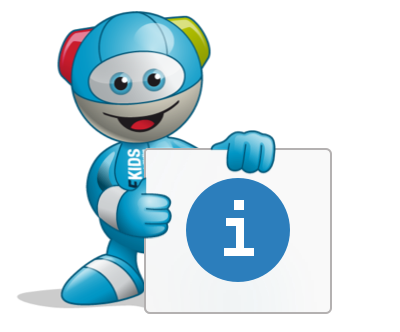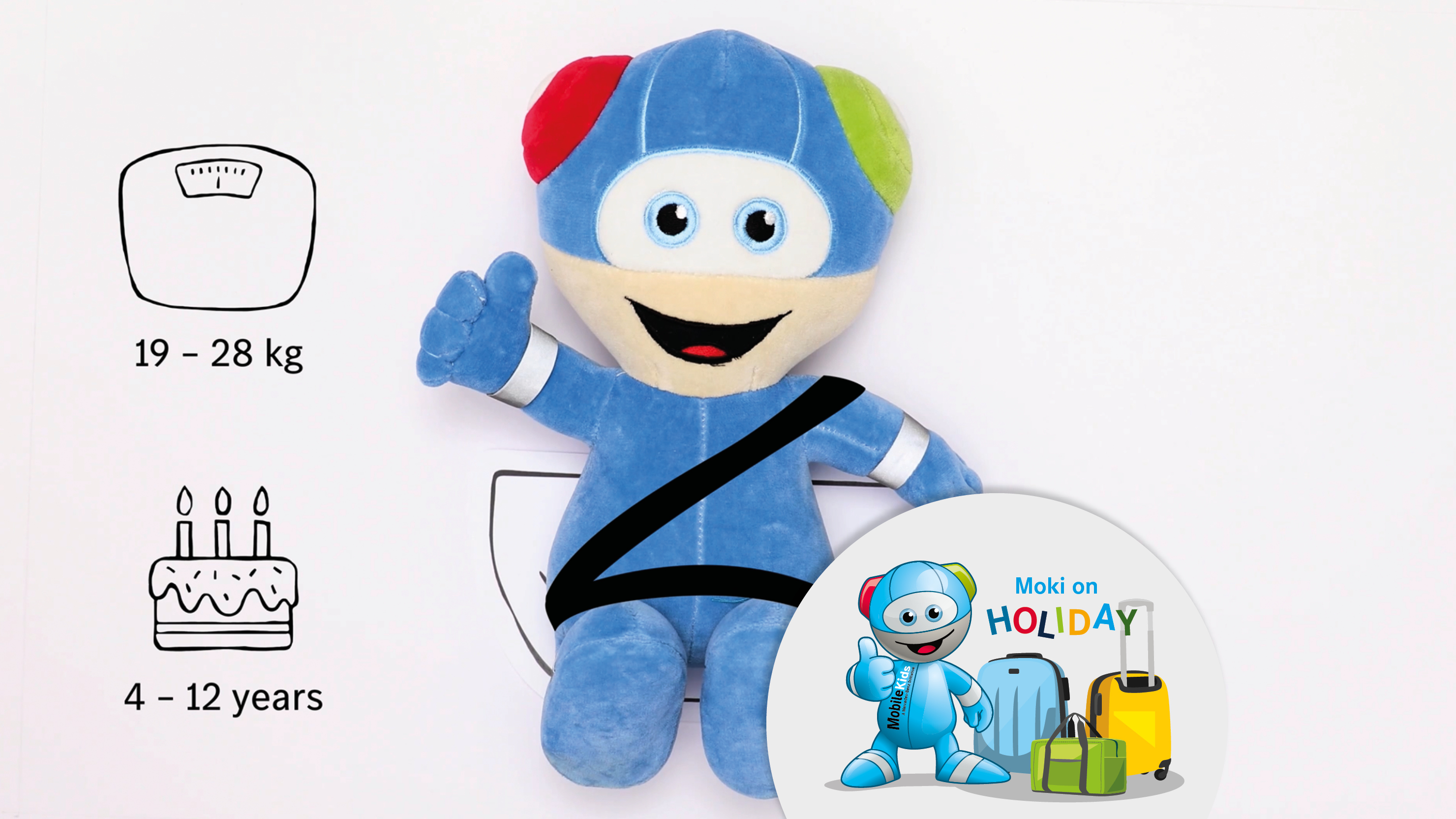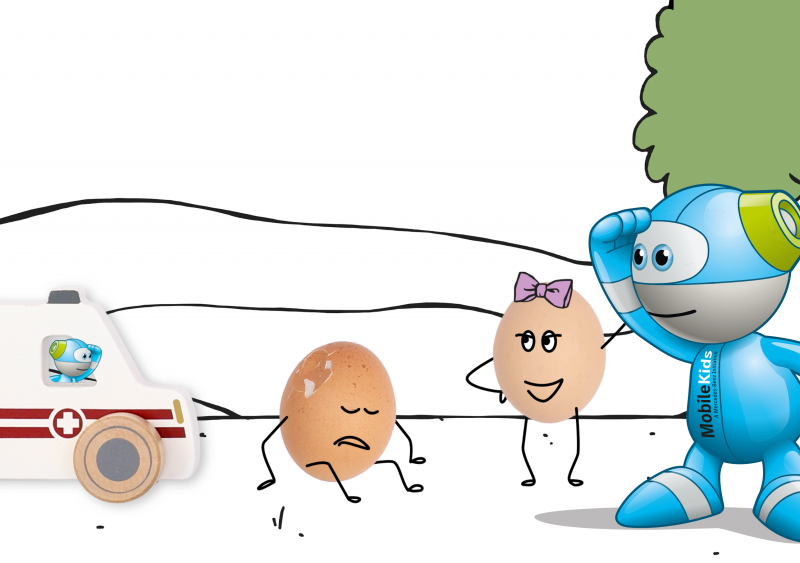Many over-30s still remember the holiday journeys of their own childhood: Lying on the back seat, it was wonderful to sleep, play or listen to music until journey's end. At most, on arriving at border crossings, some parents would remind them to sit up for a moment and fasten their seat belts. Not necessarily for safety reasons, but to avoid a possible reprimand from a strict border guard. Fortunately things are very different today. Not least because of the compulsory use of child seats introduced on 1 April 1993.
Not all seats are created equal
"Children up to the age of 12 who are less than 150 cm tall may only be carried in motor vehicles [...] if restraining devices for children are used," says Section 21 of the German Road Traffic Regulations (StVO). In plain language, restraining devices means nothing less than a child seat. However, not all child seats are the same – at the latest, parents realise this when they Google the term or visit a specialist retailer, and that's when the confusion begins. There are different categories of seats and countless models: Babies are best placed in a rear-facing infant carrier, and for larger children there are so-called reboard seats and seats with integrated backrests with or without a so-called impact shield. Just before a child seat is no longer necessary, a simple booster seat is sufficient, at least according to law. Children are secured in the seat either by integrated harnesses or the car seat belt (more on this in the video in the sidebar).

Buying a child seat is not something you do on impulse. Parents should find out in advance about the right category for their child's age and size, as well as the models and their differences. In addition to giving detailed advice, specialist shops usually offer the opportunity to install the seats in your car outside the shop – because today's high-tech seats require quite a bit of space in the vehicle with their head restraints, side impact protection and the like. Naturally the children should also be there to try the seats out. If you want to buy a used child seat, you should make sure that it has never been in an accident. And the converse also applies: after an accident with a severe impact, the child seats should no longer be used – especially models with an integrated seat belt. Mercedes-Benz offers its own range of child seats that are ideally suited to the brand's vehicles. "We use basic models from a well-known German manufacturer, optimise them and adapt them to our vehicles. This means that they meet our high in-house standards, which go far beyond the legal requirements," explains Joachim Fausel, a child safety expert at Mercedes-Benz. This makes the seats even safer in combination with the right car.
Depending on the model, the seats are simply installed in the car using the seat belt or the Isofix attachment system, which has been around since the mid-1990s and has indeed been mandatory for all newly registered vehicles in Europe since 2013. Also since 2013, there is the new European "i-Size" standard for child seats, which parents encounter again and again when buying a seat and which makes the jungle of abbreviations even more obscure. Roughly speaking: with i-Size, seats are no longer categorised according to weight, but according to body size – the old classification according to bodyweight will still apply until September 2024. Then, no more seats certified according to the old standard may be sold in the EU.
The seating position in the vehicle is not regulated by the StVO, but is freely selectable. If in a child seat, children are therefore also allowed to ride in the front of the vehicle – though in this case it's important that the front passenger airbag is deactivated if the seat is rear-facing or an infant carrier. Mercedes-Benz provides an automatic passenger airbag deactivation system for this purpose. "Every mother or father can forget to switch the airbag on or off in everyday life if this can only be done manually. To ensure that this mistake can be ruled out, Mercedes-Benz introduced automatic passenger airbag deactivation as standard years ago," says safety expert Fausel. This automatic deactivation, which works independently of the seat manufacturer, deactivates the passenger airbag not only in the case of rear-facing baby seats, but also for forward-facing seats for small children, as here too the potential risk is greater than the benefit if the airbag deploys.
In general, experts usually recommend the nearside rear seat, as it is considered the safest in the vehicle – also because the child can get in and out more safely on the side facing away from traffic. In addition to the seat and its attachment, activated child safety locks in the doors and safe stowage of all luggage are also part of the safety concept for a holiday journey.

Sarah Vasconi is an expert in car child seats at the consumer organisation Stiftung Warentest. She knows what's currently important to consumers, how safety deficiencies can still occur despite EU standards and why the decision for the right child seat is actually always made by the child in the end.
For how long and according to what criteria has Stiftung Warentest been testing car child seats?
Vasconi: In fact, almost since the beginning of our testing activities. The first test was published in May 1968. The testing was irregular at first, but from 1999 it became annual. The largest and most elaborate component is the safety tests. In these, we simulate different accident situations with crash test dummies of different sizes and weights, and with different settings of the child seats – for example in the upright and reclined position. Usability and handling are also tested of course, and since 2011 also pollutant levels – a topic that has become very important to consumers, and not only for child seats.
In these times of elaborate certification procedures for manufacturers, are there still seats that really have safety shortcomings, or is it just a matter of nuances in comfort?
Vasconi: Fortunately, the majority of products are in the "good" category with respect to safety. Nevertheless, we also discover safety deficiencies from time to time. All it takes is for the manufacturer to substitute with a part that has a design fault but does not require recertification, for example. But for the most part of course, it's aspects such as usability or price-performance that make the difference in the rating.
Once the seats have passed all the tests and achieved a good score, it's all about correct use in everyday life – what tips do you have there?
Vasconi: The most important thing is to take your time. And not just the first time, but before every trip. Because there can always be that bad day when an accident happens. With younger children, for example, it's essential to really tighten the integrated harness straps. And even with older children who may already be buckling up themselves, it's always a good idea to double-check that the belt is correctly routed through the respective fixtures. If other people such as grandparents are carrying the children, they should also have the seats and their settings well explained to them in advance.
Is there a rule of thumb for the amount parents should spend on an effective child seat?
Vasconi: There are so many different seat categories and models that it's very difficult to put a figure on this. But when it comes to safety, one should never make any compromises. If you're willing to sacrifice a little comfort in favour of price, that's another matter. But there are also good models that offer both. Some manufacturers are also working on seat models that grow with the child to cover all age groups. Naturally these are more expensive, but they replace several seats. In the end, however, the decision is largely made by the offspring themselves – because not every child can ride backwards for long periods of time owing to travel sickness, for example, or cope with a so-called impact shield in front of the stomach.
You mentioned seats that grow with the child – what other new trends are currently on the market?
Vasconi: Nowadays there are baby carriers with a special insert, where the heavy bottom section stays in the car and the baby is only lifted out with the lighter inner section. Anyone who has ever carried a baby seat for a long time knows how heavy and unwieldy they are. So far, however, only a few manufacturers are offering such a system. And then there are new products with an integrated airbag in the impact shield - these have performed very well in our tests, but are correspondingly expensive.
Think of the consequences
"It'll be fine," some parents may think to themselves when transporting their child without a seat in exceptional situations, for example during a spontaneous carshare or a short taxi ride. This casual approach is more than negligent. "Even in minor accidents, forces that are not yet a problem for adults can damage the more sensitive bodies of children," says safety expert Joachim Fausel. "But even with a seat, the right model and correct handling are crucial in an emergency: an incorrectly routed seat belt or an ISOFIX anchorage that has not latched correctly increases the risk of injury in the event of an accident. Anyone carrying children on board without a child seat, or with the wrong child seat, also risks a fine of up to 70 euros." This is intended as a deterrent, but of course not as a motivator. Instead, parents should realise before every journey that they are transporting their most precious asset, and must protect their children as best they can.

The rules on mandatory child seats in the popular holiday countries are sometimes quite different from those in Germany. Here's what applies in your destination country:
- Severe penalties in Austria: In Austria, since 2019, children only have to ride in a child seat if they are up to 1.35 metres tall (previously 1.50 metres). "Violations of the child restraint regulations may result in a fine of up to 5000 euros as well as a penalty point in the driving licence register," says the Austrian Automobile Club ÖAMTC.
- Rear seat compulsory in Spain: On the Iberian peninsula, child seats are also compulsory for children up to 1.35 metres tall. It's important to know that, with few exceptions, children must always be carried in the rear.
- Alarm in Italy: In Bella Italia, children under nine kilos must be rear-facing. Children up to a weight of 36 kilograms or a height of 1.50 metres need a child seat. Since 2020, child seats used to transport children up to and including the age of three must be equipped with an alarm to prevent children from being forgotten in the vehicle. This obligation only applies to vehicles registered in Italy, i.e. also to rental cars. "In some model series, Mercedes-Benz has started to introduce an in-vehicle system that reminds the driver of a child possibly left on the rear seat before leaving the vehicle," says safety expert Joachim Fausel. This "occupancy reminder" will be rolled out to include all new model series, and continuously developed further.
- Ten is the operative number in France: Children up to the age of ten need a child seat in France. Failure to comply will result in a fine of 135 euros.
- No motorcycle in Croatia: Children up to 1.50 metres need a child seat in Croatia, larger children must be secured with the seat belt and a booster seat. If under twelve years of age, they are not allowed to ride on a motorcycle.
- Inconsistent rules in America: The child seat regulations differ from state to state in the USA. In Florida, for example, children over the age of six no longer need a special child seat. A complete overview of all laws on the subject of child seats can be found here.
- China protects children: In 2021, a revised law on the protection of minors came into force in China. This encourages parents to use child seats. The first government standard on this topic came into force on 1 July 2012.
- No restrictions in India: Child seats are not mandatory in India, and it's correspondingly challenging to purchase a child seat in the major Indian cities.
- Things to know for long-distance travel: If you are taking a plane to a country further away, you should familiarise yourself with the local rules in advance. Some child seats are also approved for use on planes, and can therefore increase safety and perhaps also comfort. Especially if a rental car is to be used locally, it can make sense to take your own seat with you. Because car rental companies do not always have the right seat available for every child, and rental prices are often high. But be careful: the seats prescribed by law in Germany are not permitted everywhere – for example in Australia or the USA.




